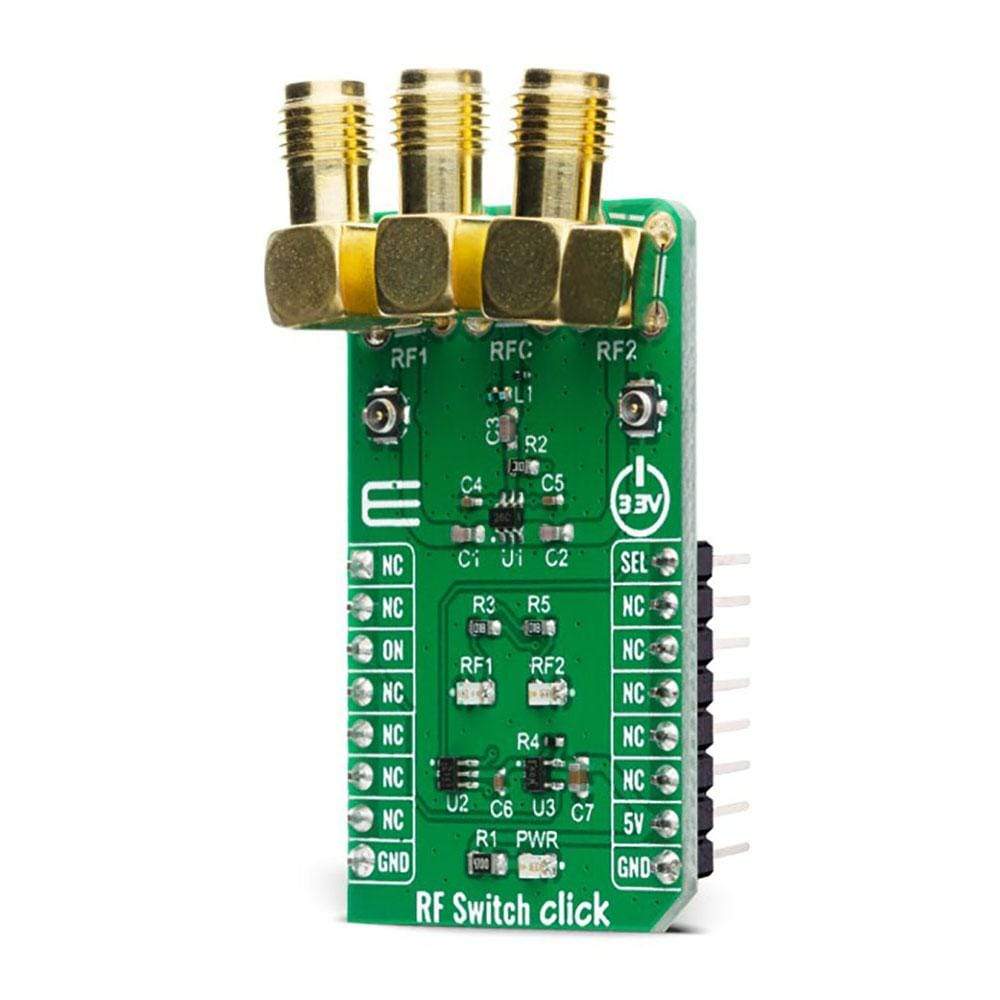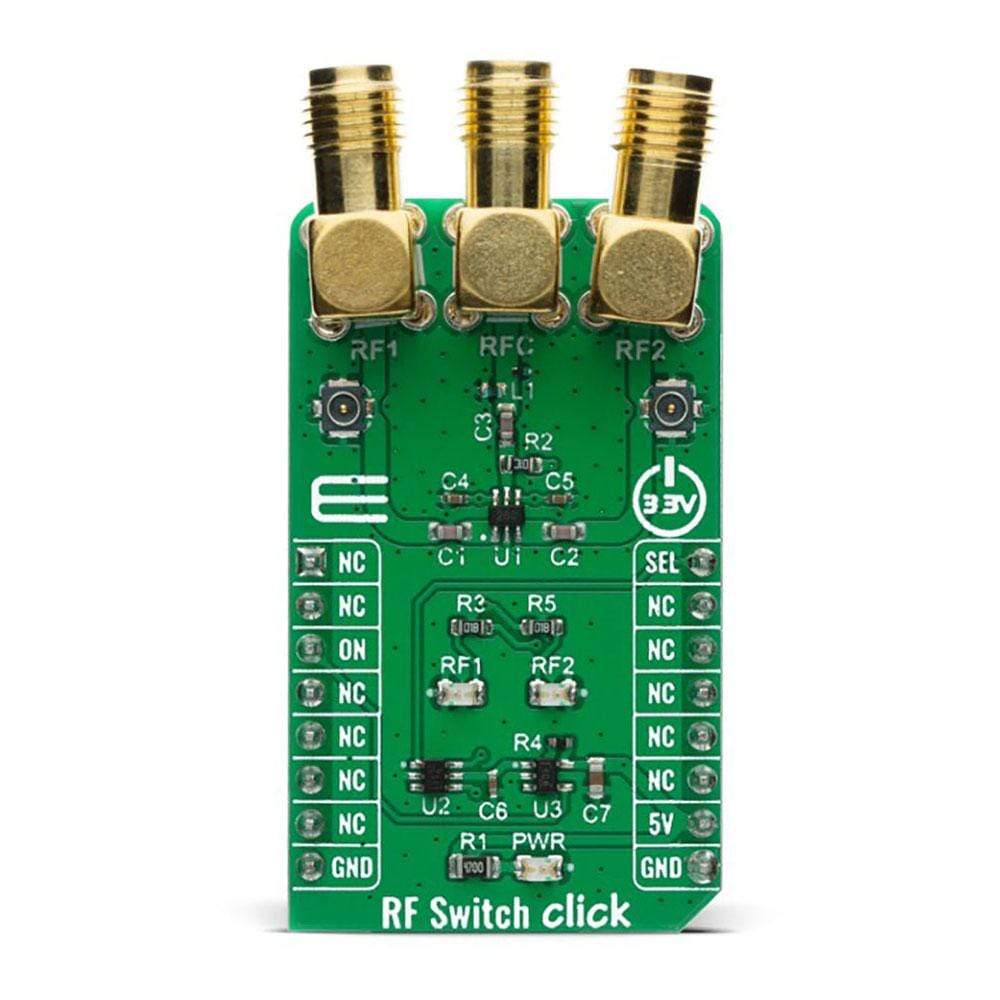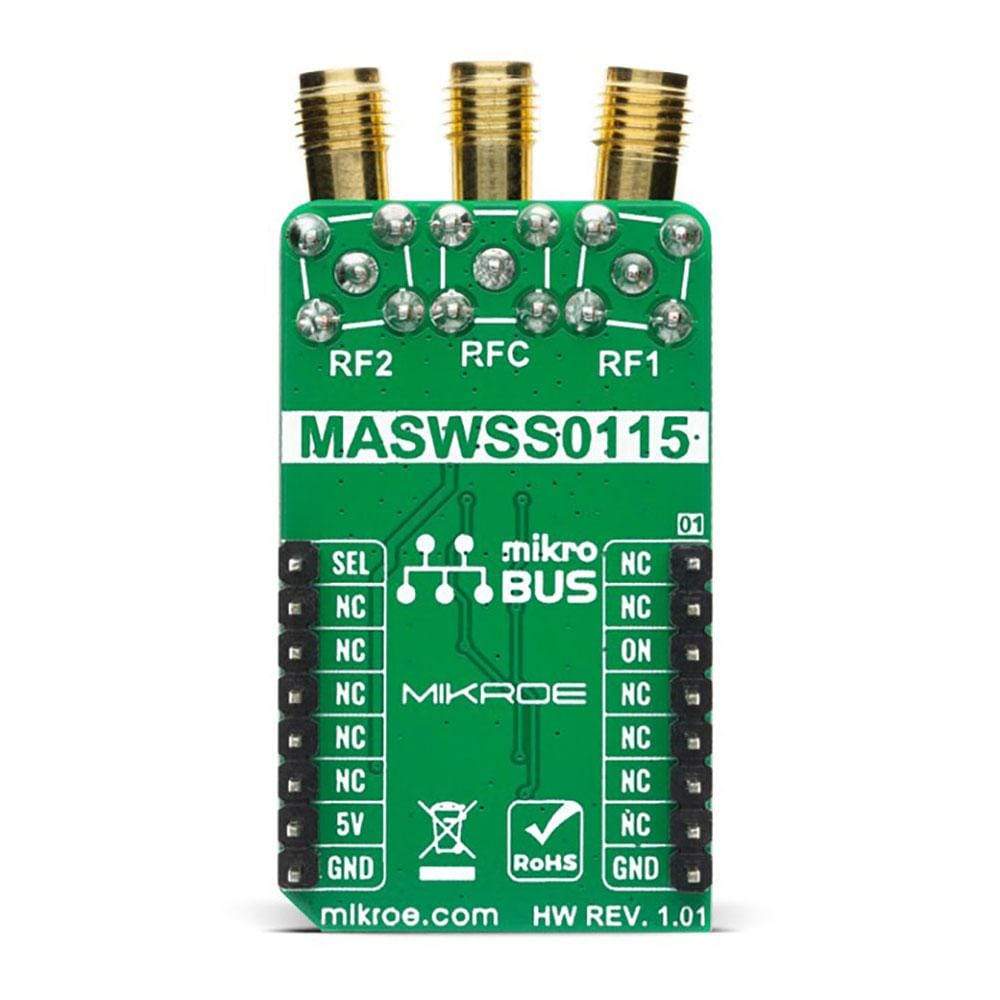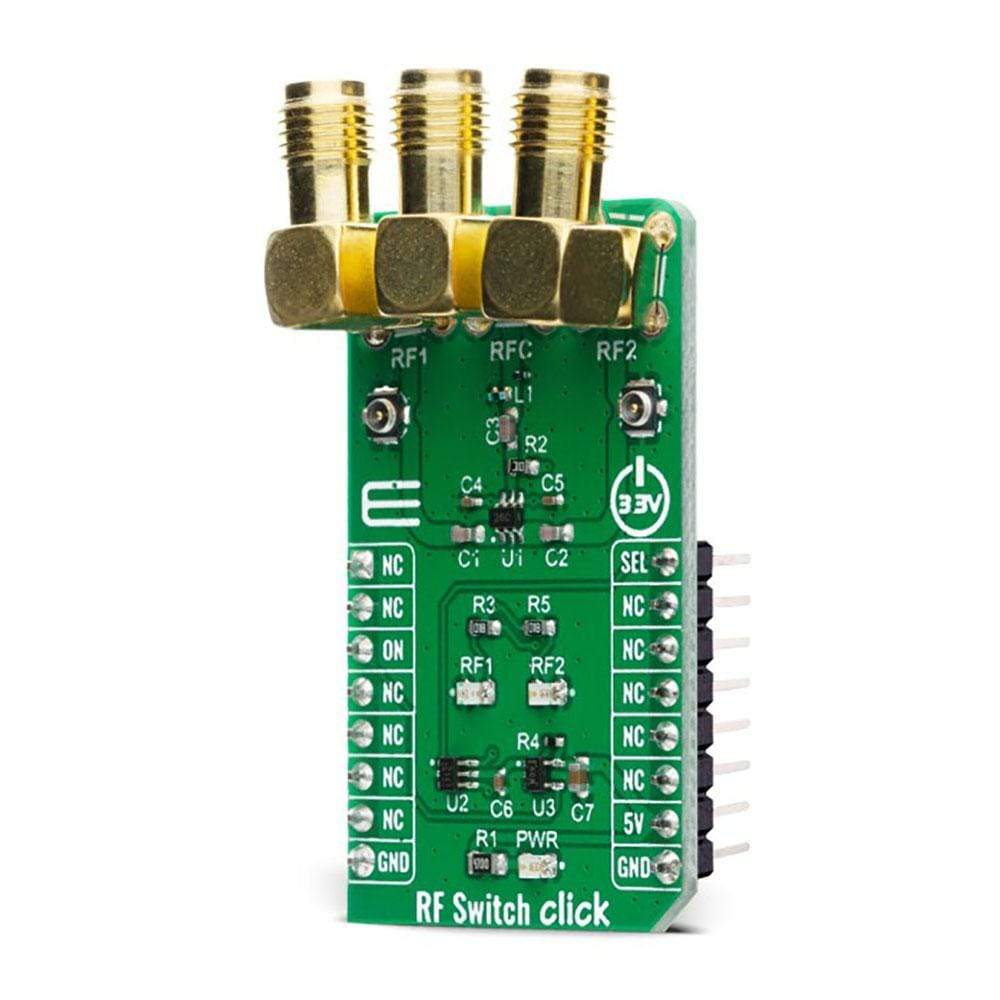
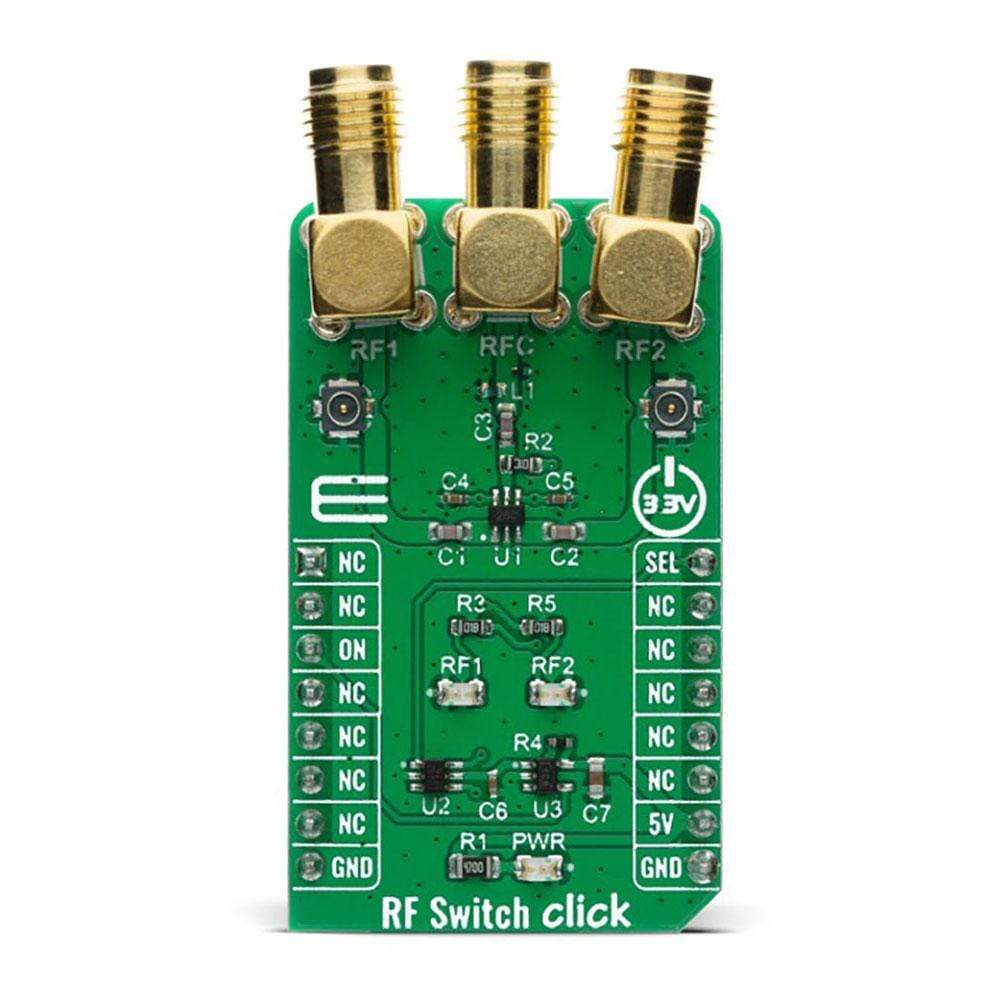
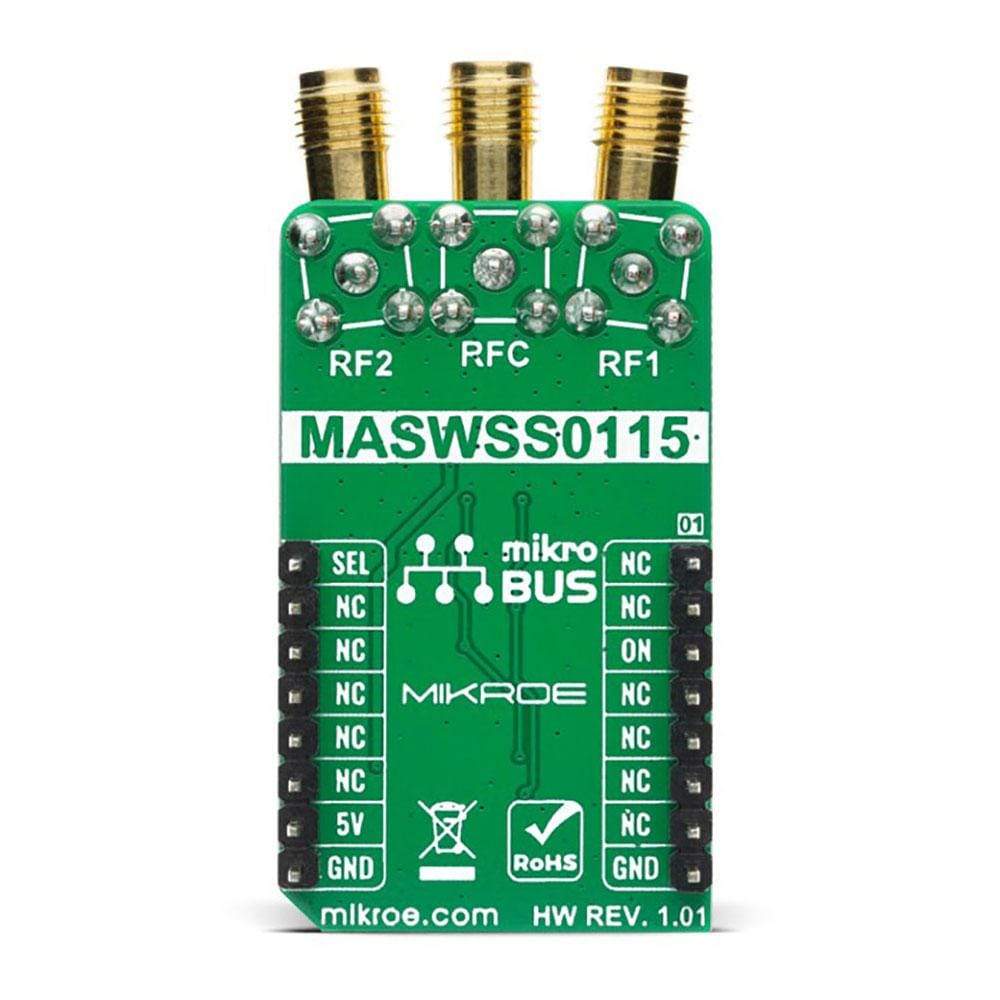
Overview
The RF Switch Click Board™ is equipped with the MASWSS0115, a GaAs PHEMT MMIC single-pole, double-throw (SPDT) switch developed by Macom for switching between small signal components such as filter banks, single-band LNAs, converters, etc. The MASWSS0115 is ideally suited for applications where very small size and low cost are required.
The RF Switch Click Board™ can be used for low power, low loss requirements in all systems operating up to 3 GHz, including PCS, GSM, DCS, Bluetooth, and other receive chain applications. The Click Board™ board includes additional drivers in the form of a complementary control and power switch for safe switching operations. RF Switch Click Board™ provides easy signal switching with an insertion loss of 0.3 dB at 2.4 GHz and maximum power consumption of 20µA.
Downloads
Le Click Board™ pour commutateurs RF est équipé du MASWSS0115, un commutateur unipolaire bidirectionnel (SPDT) GaAs PHEMT MMIC développé par Macom pour la commutation entre des composants à petit signal tels que des bancs de filtres, des LNA monobande, des convertisseurs, etc. Le MASWSS0115 est parfaitement adapté aux applications où une très petite taille et un faible coût sont requis.
La carte RF Switch Click Board™ peut être utilisée pour répondre aux exigences de faible puissance et de faible perte dans tous les systèmes fonctionnant jusqu'à 3 GHz, y compris les applications PCS, GSM, DCS, Bluetooth et autres applications de chaîne de réception. La carte Click Board™ comprend des pilotes supplémentaires sous la forme d'un commutateur de commande et d'alimentation complémentaire pour des opérations de commutation sûres. La carte RF Switch Click Board™ permet une commutation de signal facile avec une perte d'insertion de 0,3 dB à 2,4 GHz et une consommation d'énergie maximale de 20 µA.
| General Information | |
|---|---|
Part Number (SKU) |
MIKROE-4168
|
Manufacturer |
|
| Physical and Mechanical | |
Weight |
0.026 kg
|
| Other | |
Country of Origin |
|
HS Code Customs Tariff code
|
|
EAN |
8606018717880
|
Warranty |
|
Frequently Asked Questions
Have a Question?
Be the first to ask a question about this.

